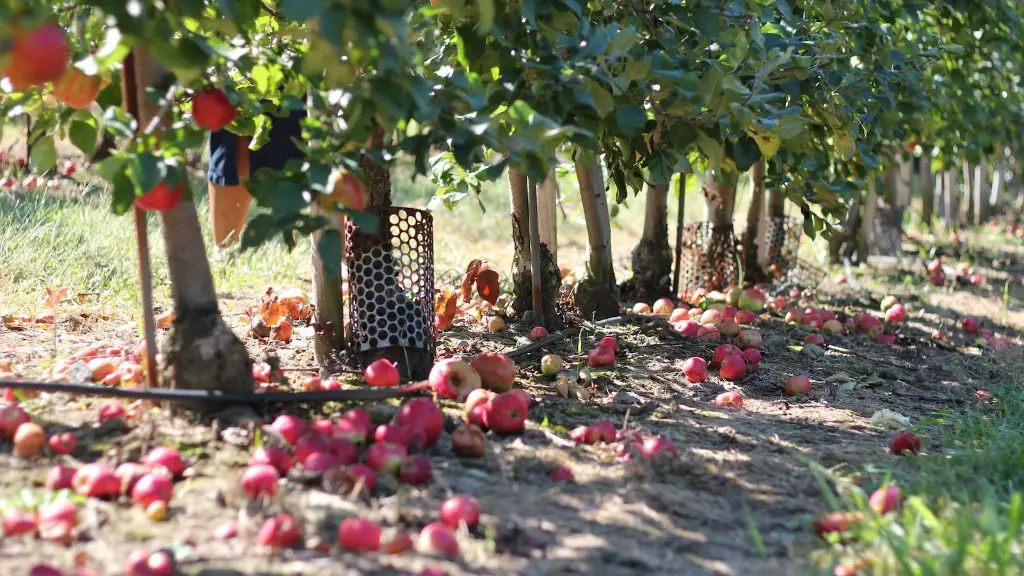It is very important to properly care for a lemon tree in order to ensure its healthy growth and bountiful harvest. There are some key steps to follow in order to care for a lemon tree, which are outlined in this article. Firstly, it is important to plant the lemon tree in an area with good sun exposure in order to ensure that it receives adequate sunlight for its growth. Make sure the soil is well draining and contains compost in order to also ensure that the tree is receiving all the nutrients it needs. Secondly, water the tree regularly, but do not overwater, as this can weaken the plant and stunt its growth. Check the soil for moisture and water once a week, when necessary. Make sure to allow the soil to dry out between waterings. Thirdly, when watering the soil, use a watering can or hose to ensure that you are delivering water to the roots of the tree and not to other parts of the tree, such as its leaves. Fourthly, add mulch around the base of the tree, to protect the roots and to help retain moisture in the soil. Also, make sure to regularly prune away dead and unhealthy branches and leaves. Fifthly, fertilizer is important for the healthy growth of the lemon tree, and should be added to the soil once or twice a year. Use a fertilizer that is specifically designed for citrus trees. Finally, it is important to monitor the tree for possible signs of pests and diseases. If noticed, take action immediately to ensure the tree remains healthy and productive.
Correct Pruning Techniques for Lemon Trees
Prune your lemon tree correctly to ensure it grows healthy and produces good fruit. Prune only in dry weather, and use clean and sharp pruning shears or secateurs. Prune away all dead or diseased wood and any weak, narrow-angled growth, as this encourages the tree to develop strong branches, and it also keeps the tree from becoming overcrowded, allowing for better airflow and light penetration to the centre of the tree. If pruning in order to reduce the size of the tree, remove 1/3 of the total canopy, as this is the safest level of pruning without stressing the tree. Every 3 to 5 years, prune away 1/2 of the previous pruning. Additionally, consider using raffia ties to attach branches together, to improve the structure of the tree.
Gathering Lemons and Storing Them
Once the lemons are mature and ready to be harvested, they should be removed from the tree. Lemons should be picked by hand and not pulled off the branches. If some of the lemons can not be plucked by hand, use a pair of long-handled pole pruners to harvest them. Lemons should also be harvested regularly- don’t allow the fruit to take too long to ripen as this can cause it to split. Inspect the lemons for any damage, and discard any that have been damaged or spoiled. Lemons should be stored in the refrigerator for approximately 2 weeks to increase their shelf life, or alternatively, they can be used immediately.
Provide Regular Maintenance for Your Lemon Tree
Regular maintenance is important in order to ensure the tree remains healthy and productive. This includes checking the tree for any signs of pests, disease, and weak or unhealthy branches. The tree should be given a deep watering once or twice a month, and fertilizer should be applied as necessary. Mulch should be added to retain moisture in the soil, and dead or diseased branches should be pruned away regularly.
Insect Control and Disease Prevention
Insects and diseases can be an issue with lemon trees and it is important to take preventative action in order to reduce their occurrence. Prune the tree regularly to improve air circulation and reduce the risk of disease, and use insecticides or organic pest controls such as neem oil if necessary. To prevent citricoside canker, choose varieties of lemon trees that are resistant to the disease, and make sure to prune away any infected branches. Additionally, inspect the tree on a regular basis and treat any signs of infestation or disease immediately.
Protecting the Tree From Frost and Extreme Temperatures
It is also important to protect the lemon tree from frost, as it is sensitive to both cold temperatures and temperatures that are too high. To protect the tree from frost, use a frost cloth or plastic wrap to cover it during cold temperatures. If temperatures become too high, use shade cloth to reduce the amount of sunlight reaching the tree. Make sure the tree is provided with adequate protection from wind and rain, and do not over-prune the tree, as this can weaken it and make it more vulnerable to frost damage.
Fertilization Tips for Lemon Trees
Fertilize your lemon tree every 3 to 4 months with a balanced fertilizer that is specifically designed for citrus trees. Use a lesser amount in winter. When fertilizing, spread the fertilizer evenly throughout the area around the roots of the tree and gently water it in. Fertilizers should be applied in moderate amounts, as applying too much can cause the tree to produce too much fruit and reduce its lifespan.
Encourage Pollination and Fruit Production
Encourage pollination and fruit production by planting two different lemon tree varieties side by side. The two varieties should be self-compatible and should bloom at the same time. Bees and other pollinating insects will be attracted to the trees, and can thus help to pollinate them. Pruning should also be done correctly and at the right times in order to encourage heavy fruit and flower production.


